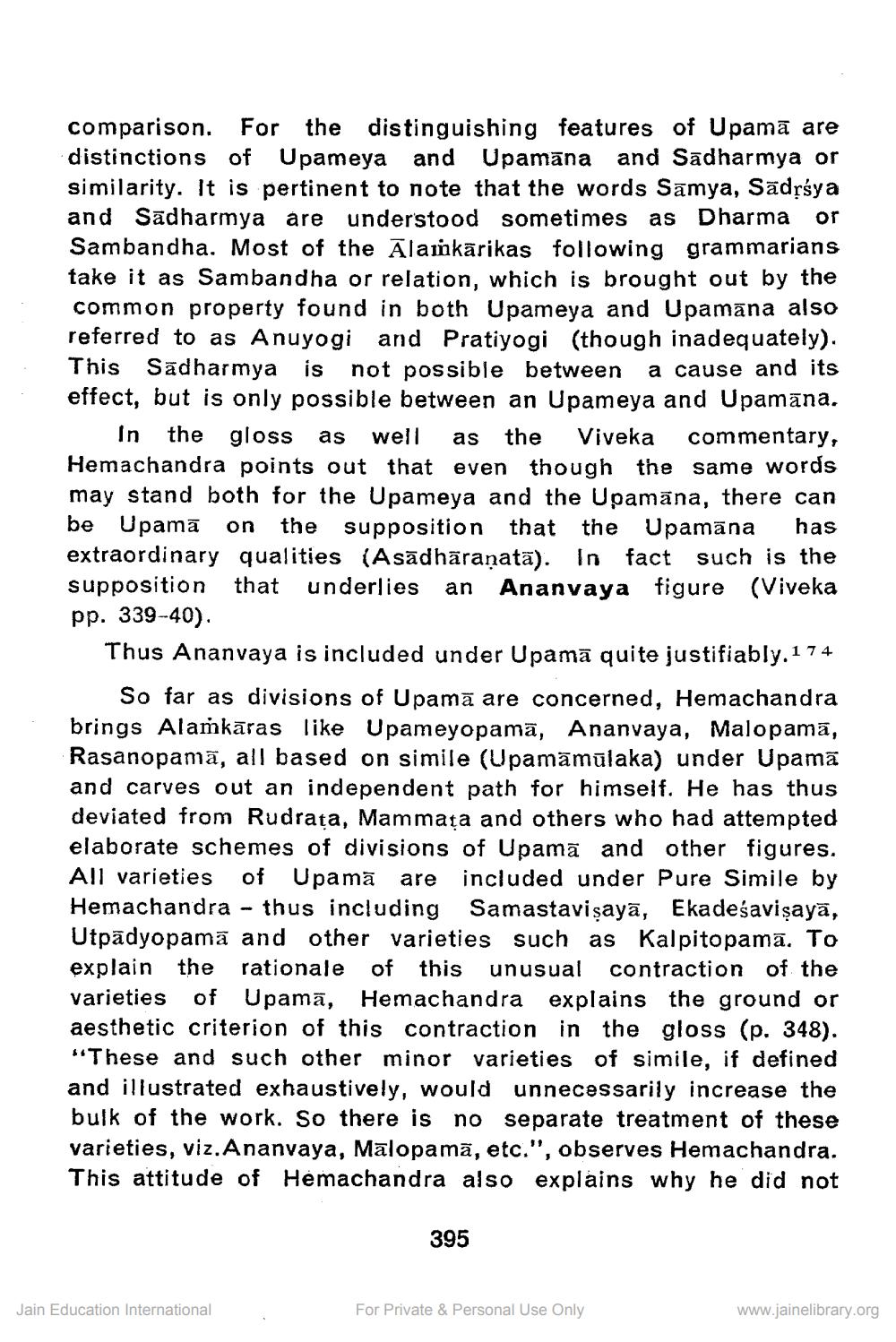________________
comparison. For the distinguishing features of Upamā are distinctions of Upameya and Upamana and Sadharmya or similarity. It is pertinent to note that the words Samya, Sādṛśya and Sadharmya are understood sometimes as Dharma or Sambandha. Most of the Alamkarikas following grammarians take it as Sambandha or relation, which is brought out by the common property found in both Upameya and Upamāna also referred to as Anuyogi and Pratiyogi (though inadequately). This Sadharmya is not possible between a cause and its effect, but is only possible between an Upameya and Upamāna.
In the gloss as well as the Viveka commentary, Hemachandra points out that even though the same words may stand both for the Upameya and the Upamana, there can be Upamā on the supposition that the Upamana has extraordinary qualities (Asadhāraṇatā). In fact such is the supposition that underlies an Ananvaya figure (Viveka pp. 339-40).
Thus Ananvaya is included under Upama quite justifiably. 174
So far as divisions of Upama are concerned, Hemachandra brings Alamkaras like Upameyopamā, Ananvaya, Malopamā, Rasanopamā, all based on simile (Upamāmūlaka) under Upamā and carves out an independent path for himself. He has thus deviated from Rudrata, Mammata and others who had attempted elaborate schemes of divisions of Upama and other figures. All varieties of Upama are included under Pure Simile by Hemachandra thus including Samastaviṣaya, Ekadeśaviṣayā, Utpadyopamā and other varieties such as Kalpitopamā. To explain the rationale of this unusual contraction of the varieties of Upama, Hemachandra explains the ground or aesthetic criterion of this contraction in the gloss (p. 348). "These and such other minor varieties of simile, if defined and illustrated exhaustively, would unnecessarily increase the bulk of the work. So there is no separate treatment of these varieties, viz. Ananvaya, Mālopamā, etc.", observes Hemachandra. This attitude of Hemachandra also explains why he did not
Jain Education International
395
For Private & Personal Use Only
www.jainelibrary.org




